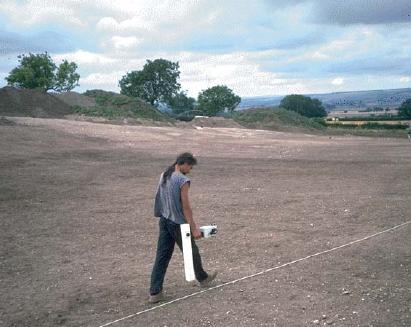

The excavation of the Late Roman and Anglian settlement at West Heslerton, North Yorkshire, has been one of the largest excavations undertaken in England in the last twenty years. It has been the setting for a number of developments and experiments in the application of 'the new technology' to field archaeology. Parts of the site, which extended over c.20 Ha., proved to have high magnetic susceptibility and were ideally suited for magnetic prospection techniques. Feature visibility contrasts were, however, frequently low and therefore a series of experiments were undertaken using high resolution fluxgate gradiometer surveys following removal of the topsoil. The results of the high resolution surveys undertaken on the cleaned excavation surface proved highly successful in providing an enhanced pre-excavation plan, adding considerable detail to the surveys undertaken prior to the start of the excavation. The careful examination of the results, using G-Sys geographic data management software, which enabled the magnetic data, finds plots and digitised plans to be fully integrated, indicated areas where stratigraphic relationships could be tested and assisted in the development and re-definition of the excavation strategy as it progressed. Following initial small area tests in 1991, nearly two hectares were documented in this way during 1995 facilitating the completion of a targeted sampling operation which ensured the completion of the excavation within the limited budget available. The approach proved highly successful and offers great potential for use on sites which have a high magnetic susceptibility and are liable to large area destruction as occurs in the case of mineral extraction or subsoil ploughing operations.
Go to the table of contents